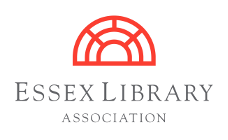Norse mythology
(Large Print)
Description
Having already appropriated Odin and Loki for his novel American Gods, Gaiman turns his restless imagination to a retelling of Norse folklore (a youthful interest of his). He begins by introducing us to the three main mythological figures: Odin, the highest and oldest of the gods; his son, Thor, who makes up in brawn what he lacks in brains; and Loki, offspring of giants and a wily trickster. In a series of stories, we learn how Thor acquired his famous hammer, Mjollnir, how Odin tricked a giant into building a wall around Asgard, the home of the gods, how Loki helped Thor retrieve his hammer from the ogre that had stolen it, and how a visit to the land of the giants resulted in the humbling of Thor and Loki. In most of the stories, a consistent dynamic rules as one god tries to get something over on another god, but novelist that he is, Gaiman also provides a dramatic continuity to these stories that takes us from the birth of the gods to their blood-soaked twilight. Employing dialogue that is anachronistically current in nature, Gaiman has great fun in bringing these gods down to a human level. Like John Gardner in Grendel, a classic retelling of Beowulf, and Philip Pullman in his rewriting of Hans Christian Andersen stories, Gaiman takes a well-worn subject and makes it his own.
Copies
Subjects
More Details
Level 5.7, 8 Points
Notes
Reviews from GoodReads
Citations
Gaiman, N. Norse mythology. Large Print edition.
Chicago / Turabian - Author Date Citation (style guide)Gaiman, Neil. Norse Mythology. .
Chicago / Turabian - Humanities Citation (style guide)Gaiman, Neil, Norse Mythology. .
MLA Citation (style guide)Gaiman, Neil. Norse Mythology. Large Print edition.
Staff View
Record Information
| Last Sierra Extract Time | Oct 15, 2025 06:42:03 PM |
|---|---|
| Last File Modification Time | Oct 15, 2025 06:42:21 PM |
| Last Grouped Work Modification Time | Oct 22, 2025 01:20:04 AM |
MARC Record
| LEADER | 02974cam a22004338i 4500 | ||
|---|---|---|---|
| 001 | ocn971508785 | ||
| 003 | OCoLC | ||
| 005 | 20250210234950.0 | ||
| 008 | 170221s2017 meu ed 000 0 eng | ||
| 010 | |a 2017002602 | ||
| 020 | |a 9781410499493 |q (hardcover) | ||
| 020 | |a 1410499499 |q (hardcover) | ||
| 035 | |a (OCoLC)971508785 | ||
| 037 | |b Thorndike Pr, C/O Gale Group Po Box 9187, Farmington Hills, MI, USA, 48331-3535, (248)6994253 |n SAN 213-4373 | ||
| 040 | |a DLC |b eng |e rda |c DLC |d BTCTA |d BDX |d OCLCO |d OCLCQ |d OCLCF |d ORX |d GO3 |d IK2 |d OJ4 |d OCLCO |d BKL |d GPI |d WD | ||
| 042 | |a pcc | ||
| 043 | |a ev----- | ||
| 050 | 1 | 0 | |a BL860 |b .G35 2017b |
| 082 | 0 | 0 | |a 293/.13 |2 23 |
| 100 | 1 | |a Gaiman, Neil, |e author. |0 http://id.loc.gov/authorities/names/n90640849 | |
| 245 | 1 | 0 | |a Norse mythology / |c Neil Gaiman. |
| 250 | |a Large Print edition. | ||
| 263 | |a 1705. | ||
| 264 | 4 | |a Waterville : |b Thorndike Press, |c ©2017 | |
| 300 | |a 331 pages (large print) ; |c 23 cm. | ||
| 336 | |a text |b txt |2 rdacontent | ||
| 337 | |a unmediated |b n |2 rdamedia | ||
| 338 | |a volume |b nc |2 rdacarrier | ||
| 340 | |n large print. |2 rda | ||
| 490 | 1 | |a Thorndike Press Large Print core | |
| 520 | |a Having already appropriated Odin and Loki for his novel American Gods, Gaiman turns his restless imagination to a retelling of Norse folklore (a youthful interest of his). He begins by introducing us to the three main mythological figures: Odin, the highest and oldest of the gods; his son, Thor, who makes up in brawn what he lacks in brains; and Loki, offspring of giants and a wily trickster. In a series of stories, we learn how Thor acquired his famous hammer, Mjollnir, how Odin tricked a giant into building a wall around Asgard, the home of the gods, how Loki helped Thor retrieve his hammer from the ogre that had stolen it, and how a visit to the land of the giants resulted in the humbling of Thor and Loki. In most of the stories, a consistent dynamic rules as one god tries to get something over on another god, but novelist that he is, Gaiman also provides a dramatic continuity to these stories that takes us from the birth of the gods to their blood-soaked twilight. Employing dialogue that is anachronistically current in nature, Gaiman has great fun in bringing these gods down to a human level. Like John Gardner in Grendel, a classic retelling of Beowulf, and Philip Pullman in his rewriting of Hans Christian Andersen stories, Gaiman takes a well-worn subject and makes it his own. | ||
| 521 | 8 | |a 830L |b Lexile | |
| 526 | 0 | |a Accelerated Reader |b MG+ |c 5.7 |d 8 |z 191909 | |
| 650 | 0 | |a Mythology, Norse. |0 http://id.loc.gov/authorities/subjects/sh85089413 | |
| 650 | 0 | |a Large type books. |0 http://id.loc.gov/authorities/subjects/sh85074712 | |
| 830 | 0 | |a Thorndike Press large print core series. |0 http://id.loc.gov/authorities/names/n2002020101 | |
| 907 | |a .b25219182 | ||
| 945 | |y .i59048591 |i 21802512034 |l wdaln |s - |h |u 4 |x 1 |w 0 |v 2 |t 10 |z 08-02-17 |o - |a LT 398.20948/GAI | ||
| 998 | |e - |d l |f eng |a wd | ||




